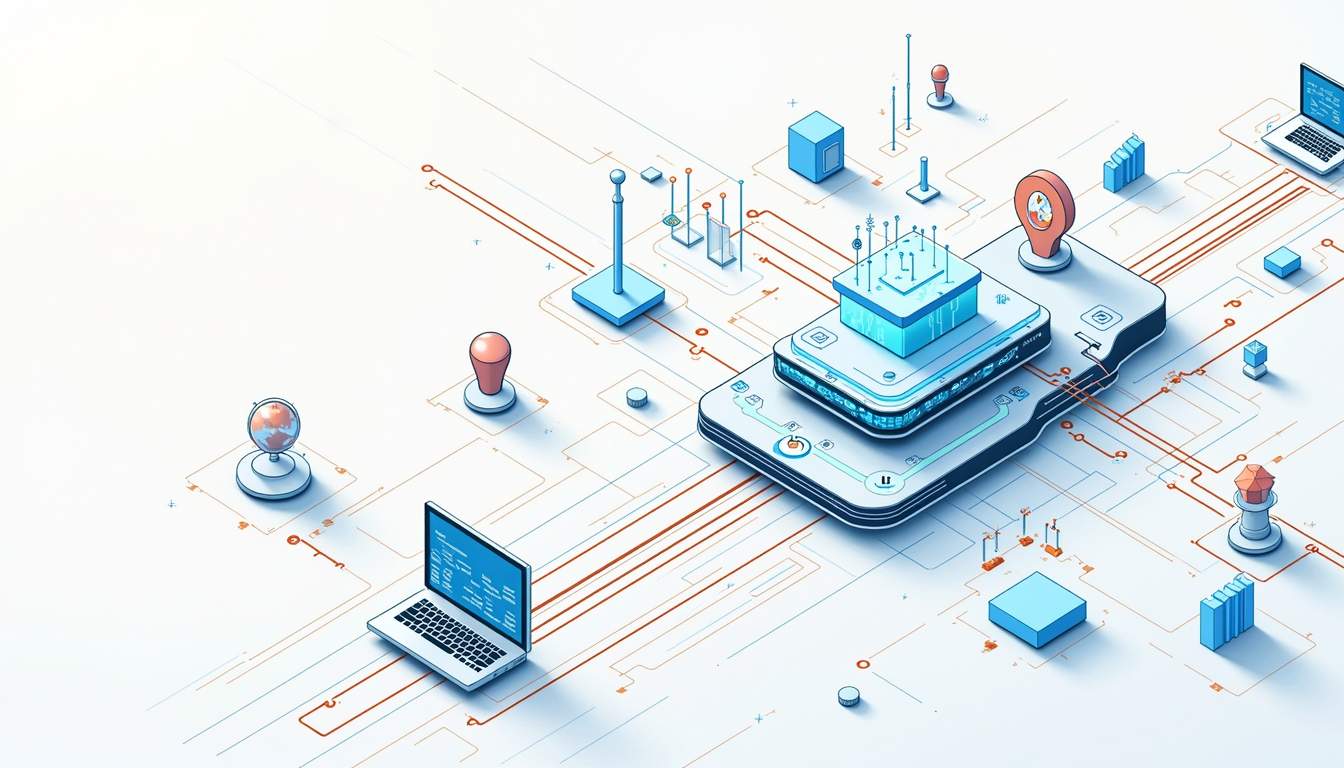Data fusion is a critical process in the realm of cyber-physical systems (CPS), where the integration of data from multiple sources enhances the decision-making capabilities of these systems. As technology continues to advance, the need for efficient and effective data fusion techniques becomes increasingly important. This article explores various data fusion techniques and their applications within cyber-physical systems, shedding light on their significance in today’s interconnected world.
Understanding Data Fusion
Data fusion refers to the process of integrating data from different sources to produce more accurate, reliable, and comprehensive information. This technique is particularly valuable in environments where data is collected from various sensors, devices, or systems. By combining these disparate data sources, data fusion can enhance the quality of information, leading to better insights and decisions.

In the context of cyber-physical systems, which blend physical processes with computational elements, data fusion plays a pivotal role. CPS often involve numerous sensors and actuators that generate vast amounts of data. The challenge lies in effectively managing and interpreting this data to ensure optimal system performance. The complexity of these systems necessitates advanced algorithms and methodologies that can handle the intricacies of data integration, ensuring that the resulting information is not only accurate but also actionable.
Types of Data Fusion
Data fusion can be classified into several types, each serving different purposes and applications. The primary types include:
- Low-Level Fusion: This involves the integration of raw data from multiple sensors. Low-level fusion is often used to improve the accuracy of measurements, such as combining readings from multiple temperature sensors to achieve a more precise temperature reading.
- Feature-Level Fusion: In this approach, features extracted from raw data are combined. For instance, in image processing, features like edges and textures from different images can be fused to create a more detailed representation.
- Decision-Level Fusion: This type combines decisions or classifications made by different systems or algorithms. It is particularly useful in scenarios where multiple algorithms provide different predictions, allowing for a consensus decision.
The Importance of Data Fusion in CPS
The integration of data fusion techniques in cyber-physical systems is crucial for several reasons. Firstly, it enhances the reliability of the system by reducing uncertainty. By aggregating data from various sources, CPS can minimize errors and provide more accurate outputs.
Secondly, data fusion enables real-time decision-making. In many applications, such as autonomous vehicles or industrial automation, timely responses are essential. Data fusion allows these systems to process and analyze data rapidly, facilitating immediate actions based on the most current information. Furthermore, the ability to synthesize data from diverse sources can lead to the discovery of patterns and correlations that might not be evident when examining data in isolation. For example, in smart cities, data from traffic sensors, weather stations, and public transport systems can be fused to optimize traffic flow and enhance urban planning.
Moreover, the scalability of data fusion techniques is another significant advantage, as they can adapt to increasing amounts of data and more complex sensor networks. As the Internet of Things (IoT) continues to expand, the volume of data generated will grow exponentially, making effective data fusion essential for maintaining system efficiency and performance. By leveraging machine learning and artificial intelligence, data fusion can evolve to handle this influx, ensuring that cyber-physical systems remain robust and responsive in dynamic environments.
Applications of Data Fusion in Cyber-Physical Systems
The applications of data fusion in cyber-physical systems are vast and varied, spanning numerous industries and domains. Below are some notable applications that highlight the significance of data fusion techniques.
Autonomous Vehicles
Autonomous vehicles rely heavily on data fusion to navigate safely and efficiently. These vehicles are equipped with various sensors, including LiDAR, cameras, and radar, each providing different types of information about the environment. Data fusion techniques combine these inputs to create a comprehensive understanding of the vehicle’s surroundings.
For example, while LiDAR provides precise distance measurements, cameras can identify road signs and lane markings. By fusing this data, the vehicle can make informed decisions, such as when to stop, accelerate, or change lanes. This integration is crucial for ensuring the safety and reliability of autonomous driving systems. Moreover, advanced algorithms are employed to continuously refine these data fusion processes, allowing vehicles to adapt to changing conditions, such as inclement weather or unexpected obstacles, thereby enhancing their operational robustness.
Smart Manufacturing
In the realm of smart manufacturing, data fusion techniques are employed to optimize production processes and enhance operational efficiency. Manufacturing systems often consist of numerous machines, sensors, and control systems that generate a wealth of data.
By applying data fusion, manufacturers can monitor equipment performance, predict maintenance needs, and streamline operations. For instance, combining data from vibration sensors and temperature sensors can help identify potential equipment failures before they occur, reducing downtime and maintenance costs. Additionally, data fusion can facilitate real-time decision-making by integrating supply chain data with production metrics, allowing manufacturers to respond swiftly to fluctuations in demand or supply disruptions, thus maintaining a competitive edge in the market.
Healthcare Monitoring Systems
Healthcare is another domain where data fusion techniques have made significant strides. In patient monitoring systems, data is collected from various sensors, such as heart rate monitors, blood pressure cuffs, and oxygen saturation devices. Data fusion allows healthcare professionals to obtain a holistic view of a patient’s condition.
By integrating these diverse data sources, healthcare providers can make more accurate diagnoses and tailor treatment plans to individual patients. For instance, combining data from multiple sensors can help identify patterns that indicate potential health issues, enabling timely interventions. Furthermore, the use of machine learning algorithms in conjunction with data fusion can enhance predictive analytics, enabling healthcare systems to anticipate patient needs and improve overall care management, ultimately leading to better patient outcomes and more efficient healthcare delivery.
Challenges in Data Fusion
Despite its numerous advantages, data fusion in cyber-physical systems is not without challenges. Several factors can complicate the effective implementation of data fusion techniques.

Data Quality and Reliability
The quality of data is paramount in the data fusion process. Inaccurate or unreliable data can lead to erroneous conclusions and decisions. Ensuring that the data collected from various sources is accurate, consistent, and timely is a significant challenge in many CPS applications.
Moreover, the presence of noise in sensor data can further complicate the fusion process. Techniques must be employed to filter out noise and improve the overall quality of the data being integrated. For instance, advanced filtering methods such as Kalman filters or particle filters can be utilized to enhance the reliability of sensor readings. Additionally, implementing robust validation protocols can help identify and mitigate the impact of outliers in the dataset, ensuring that only high-quality data is used in the fusion process.
Scalability Issues
As cyber-physical systems grow in complexity, the volume of data generated also increases. This scalability issue poses a challenge for data fusion techniques, as processing and integrating large datasets can require significant computational resources.
Efficient algorithms and architectures must be developed to handle the growing data demands without compromising performance. This may involve leveraging cloud computing or edge computing solutions to distribute the processing load effectively. Furthermore, the design of scalable data fusion frameworks that can dynamically adapt to varying data rates and types is crucial. Techniques such as parallel processing and the use of machine learning models can also facilitate real-time data fusion, allowing systems to respond promptly to changing conditions and maintain operational efficiency.
Future Trends in Data Fusion for CPS
The field of data fusion is continually evolving, with emerging trends that promise to enhance its application in cyber-physical systems. Understanding these trends can provide insights into the future of data fusion techniques.

Artificial Intelligence and Machine Learning
Artificial intelligence (AI) and machine learning (ML) are increasingly being integrated into data fusion techniques. These technologies can analyze vast amounts of data and identify patterns that may not be apparent through traditional methods. By leveraging AI and ML, data fusion can become more adaptive and intelligent, improving its effectiveness in dynamic environments.
For instance, in autonomous vehicles, machine learning algorithms can learn from past experiences and improve decision-making over time, leading to safer and more efficient navigation. Moreover, AI-driven data fusion can enhance predictive analytics, enabling systems to anticipate future scenarios based on historical data trends. This capability is particularly useful in sectors such as healthcare, where it can assist in predicting patient outcomes and optimizing treatment plans based on a comprehensive analysis of diverse data sources.
Edge Computing
Edge computing is another trend that is shaping the future of data fusion in cyber-physical systems. By processing data closer to the source—such as at the sensor level—edge computing reduces latency and bandwidth usage. This is particularly beneficial for applications that require real-time responses, such as industrial automation or remote monitoring.
Data fusion techniques can be implemented at the edge, allowing for quicker decision-making and reducing the reliance on centralized data processing systems. This shift not only enhances the responsiveness of systems but also improves their resilience against network disruptions. In smart cities, for example, edge computing can facilitate real-time traffic management by fusing data from various sensors, such as cameras and traffic lights, to optimize flow and reduce congestion. As the Internet of Things (IoT) continues to expand, the integration of edge computing with data fusion will be crucial in managing the massive influx of data generated by interconnected devices.
Conclusion
Data fusion techniques are integral to the functionality and efficiency of cyber-physical systems. By combining data from various sources, these techniques enhance the accuracy, reliability, and responsiveness of systems across multiple domains, from autonomous vehicles to healthcare monitoring.
While challenges such as data quality and scalability remain, advancements in artificial intelligence, machine learning, and edge computing offer promising solutions for the future. As technology continues to evolve, the role of data fusion in cyber-physical systems will undoubtedly expand, paving the way for smarter, more efficient, and interconnected systems.
Take Control of Your Cyber-Physical Systems with Cybersort
As you’ve seen, the right data fusion techniques are crucial for enhancing the efficiency and reliability of cyber-physical systems. Cybersort offers the tools and insights needed to document, structure, and manage your plant’s digital infrastructure effectively. With our expertise, you can ensure safer operations, robust cybersecurity, and a successful digital transformation. Ready to unlock the full potential of your cyber-physical systems? Book a discovery call with us today and take the first step towards optimized digital control.


